Kutná Hora is one of the most fascinating and historically rich cities in the Czech Republic, located in the Central Bohemian region. Known for its architectural heritage, Gothic churches, and outstanding historical monuments, Kutná Hora is a must-see destination for those who are passionate about art, history, and culture. The city, which was once an important mining center, is now recognized as a UNESCO World Heritage Site, thanks to its incredible beauty and the variety of its points of interest.
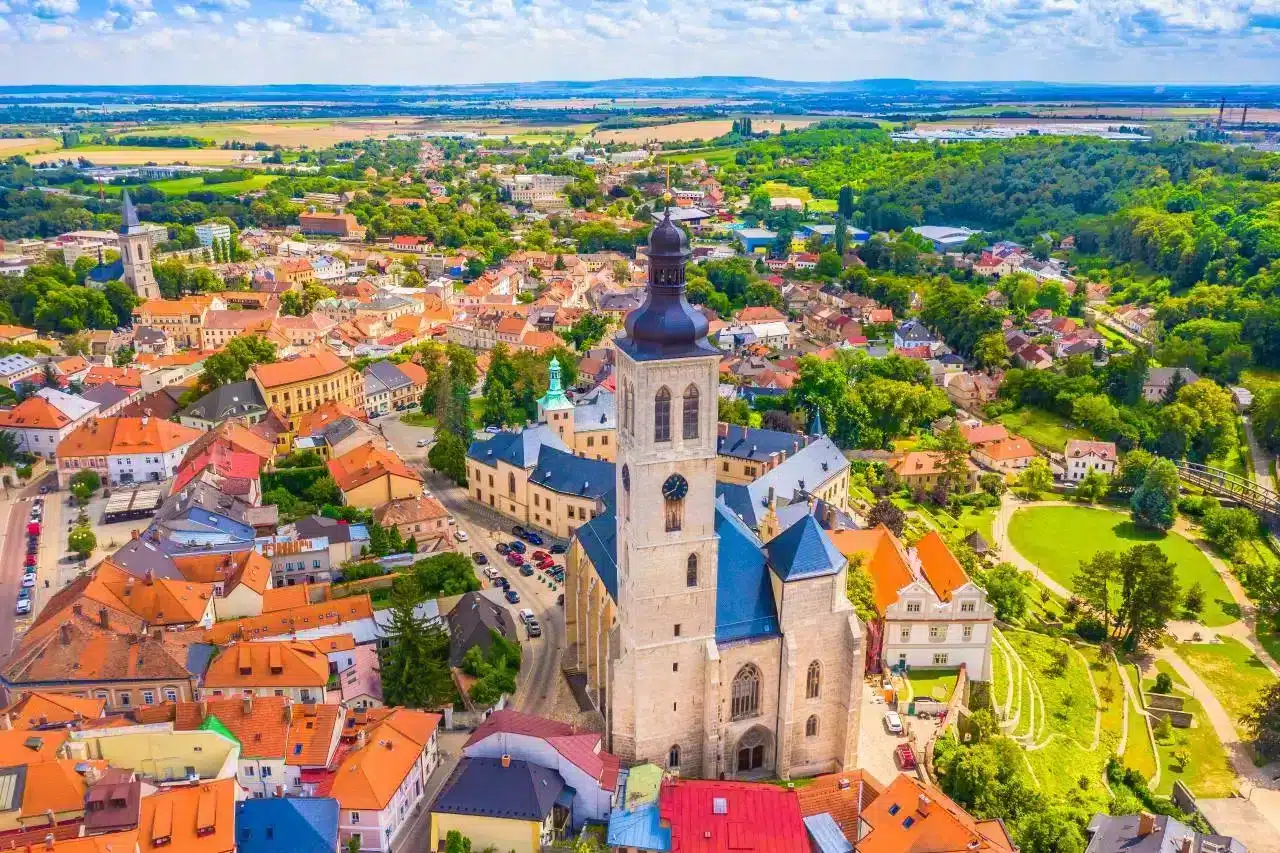
Stone Monuments
Two of Kutná Hora’s most significant historical wonders are the Stone Fountain (Kamenná kašna) and the Stone House (Kamenný dům), both fascinating examples of stone architecture that tell centuries-old stories.
The Stone Fountain, located on the picturesque Rejsek Square (Rejskovo náměstí), is an architectural masterpiece dating from the late 15th century. Its imposing beauty and monumentality tell not only of the artistry of the time, but also of the close relationship between the city’s inhabitants and water, a vital element for survival. Its majesty and elegant design make it one of the main attractions of Kutná Hora, an ideal spot for a break during a walk through the historic center.
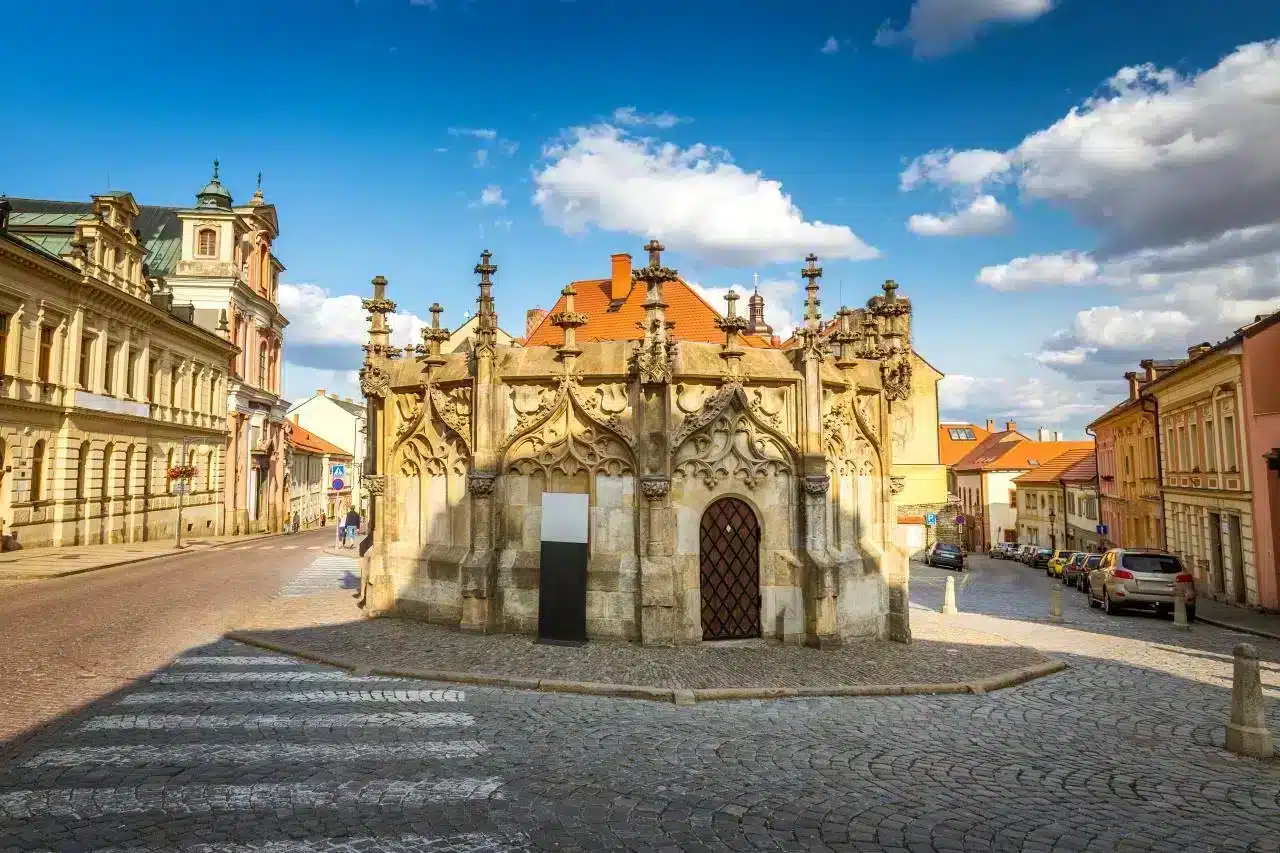
A short distance away is the Stone House, one of Bohemia’s most significant Gothic monuments, not only because of its antiquity, but especially because it represents the thought and lifestyle of the time. Built between 1485 and 1499 by the bourgeois Prokop Kroupa, who was granted the title of nobility in 1499, the house features a depiction of knights on the gable that testifies to this transition. It is easily recognized by its tall triangular gable with Gothic windows, rich sculptural decoration, pinnacles, and double front door. It is part of the city’s historic center, protected as a UNESCO World Heritage Site.
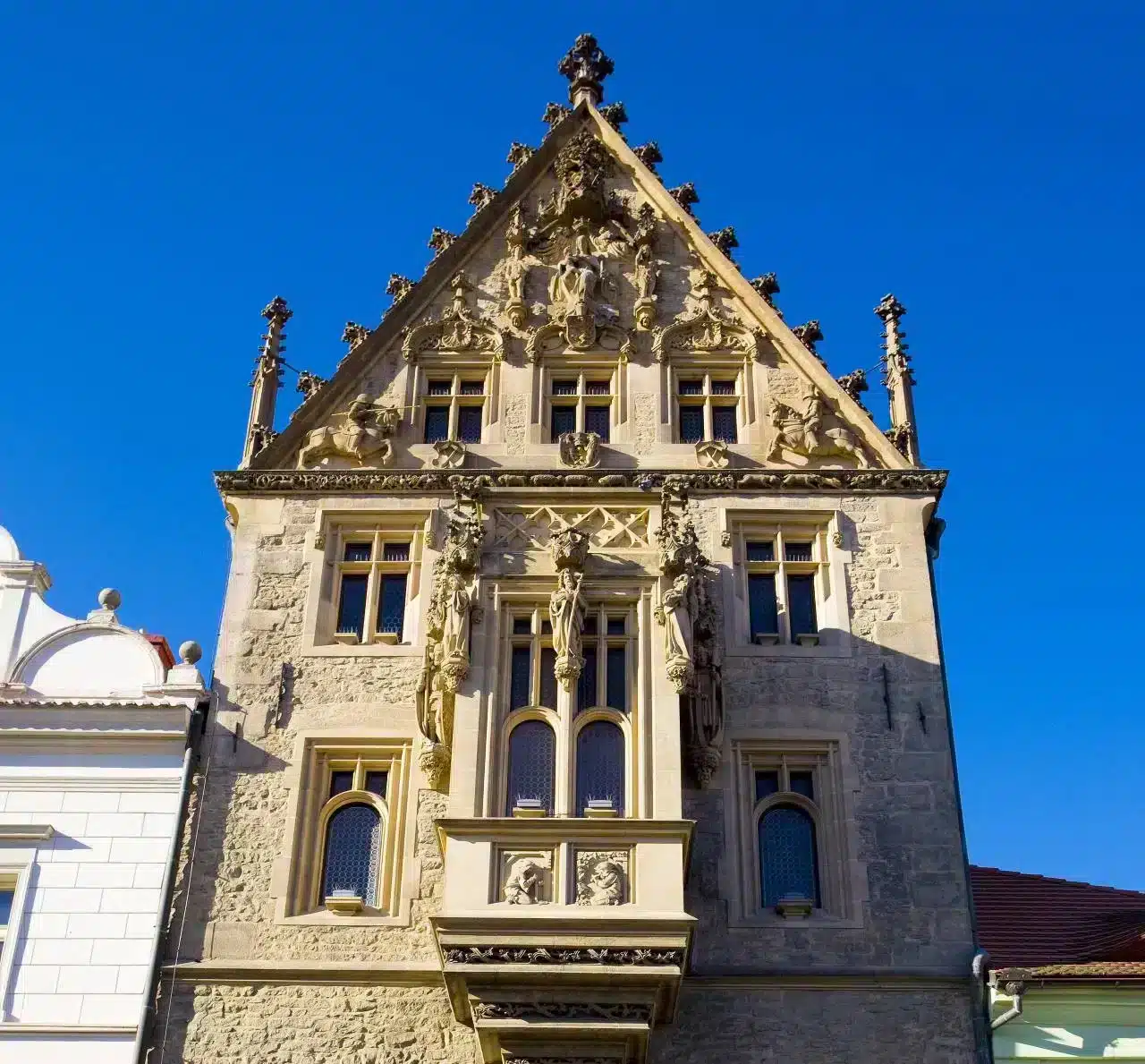
The mining history of Kutná Hora
Two of Kutná Hora’s most significant sites are deeply linked to its long mining tradition: the Cathedral of St. Barbara and the Silver Mine.
Kutná Hora’s St. Barbara’s Cathedral is one of the most important examples of late medieval architecture in the Czech Republic, and is also a symbol of the mining town, inextricably linked to the silver deposits. Built to honor St. Barbara, the patron saint of miners, the cathedral reflects the prosperity of the city, which for centuries was a center of wealth and mining activity. Its construction, which took a full five hundred years, is a true masterpiece, with contributions from talented architects who designed its monumental and majestic appearance.

Inside, the church enchants with its late Gothic and Renaissance frescoes, which decorate the walls and side chapels. These frescoes not only reflect the artistic beauty of the period, but also tell the story of the city’s mining history, depicting scenes of life in the mines and the minting of coins, thus linking the city’s past to its religious identity. The cathedral’s imposing size, combined with its Gothic architecture, make it an icon visible from afar. Its monumental appearance and the use of elegant spires contribute to a visual impression that towers over the surrounding landscape, while the interior, bright thanks to its stained glass windows, creates an atmosphere that seems to convey a feeling of uplift to the heavens.
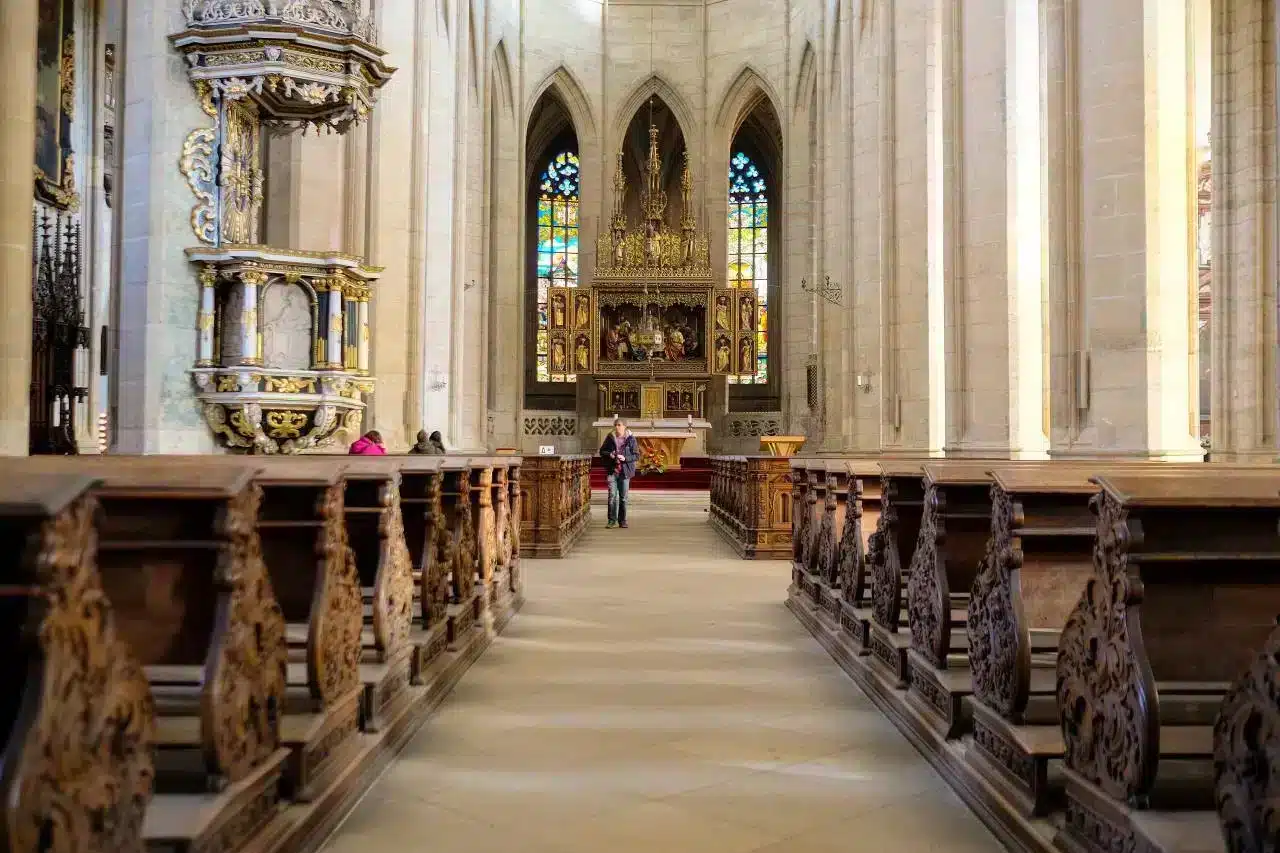
Not far from this impressive structure, the Silver Mine represents another important chapter in the city’s history. A place that allows visitors to immerse themselves in the heart of the ancient mining industry that made Kutná Hora famous. An excellent opportunity to learn about the town’s history and silver mining is to visit the Czech Silver Museum, which houses an exhibition dedicated to the mining and processing of this precious metal, along with other interesting exhibits. Inside the museum, the tour includes three historical buildings: the castle, which illustrates its manufacture, and the Stone House, an important example of late Gothic architecture, which offers a glimpse into the life of the bourgeoisie between the 17th and 19th centuries. But the real experience is underground. Visitors have the opportunity to explore the underground of Kutná Hora, a network of tunnels that tell the story of one of the most important medieval mining centers. Guided tours take participants through the narrow tunnels, where they can understand how silver was mined and what difficulties miners faced in their daily work. This fascinating journey into the past provides an up-close look at one of the most important aspects of Kutná Hora’s history, making it a unique and educational experience that reveals the value of this place in the context of European mining history.
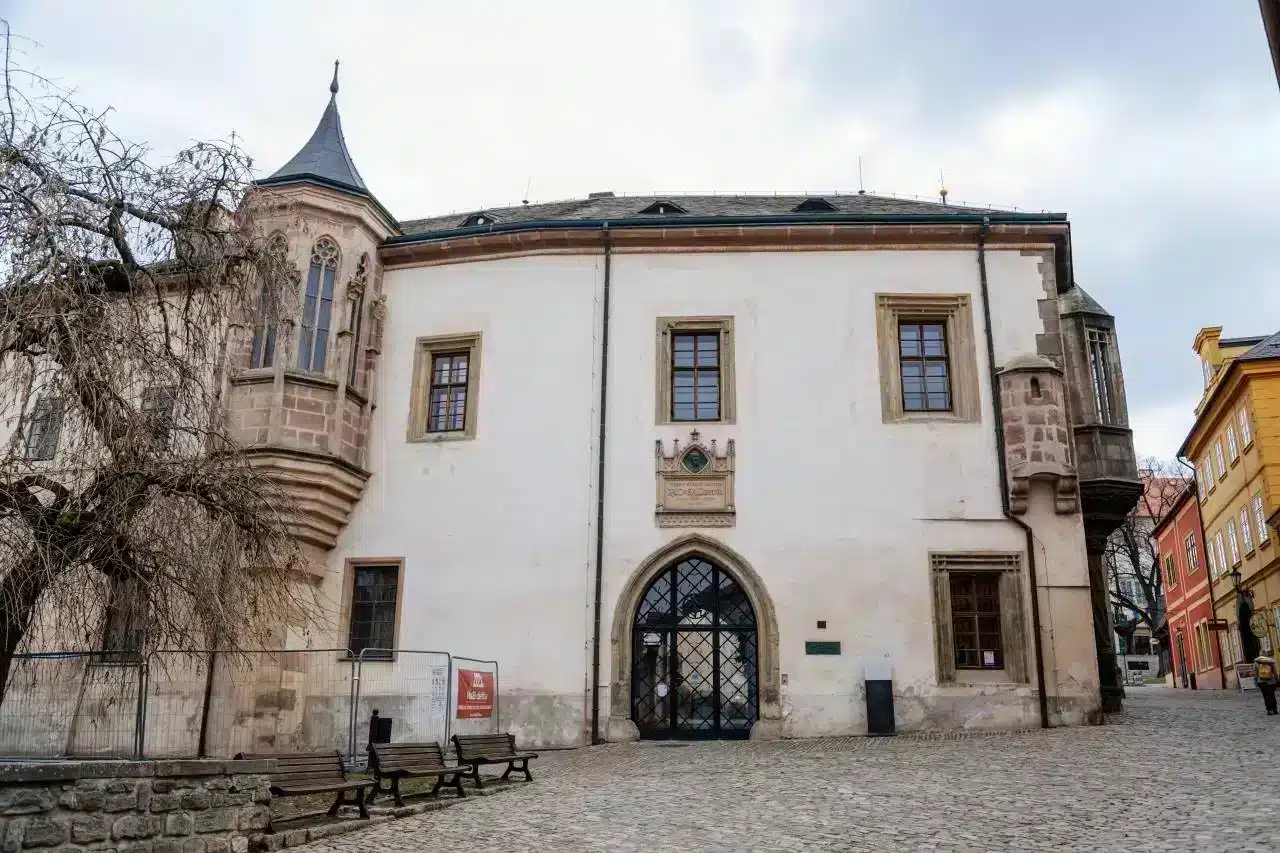
Art and History in Kutná Hora
Kutná Hora is not only famous for its rich mining history, but also for its cultural and artistic heritage, which is reflected in places like the GASK Gallery and the Italian Court.
The GASK Gallery (Galerie Středočeského kraje) is a fascinating place where modern art and history are intertwined, offering visitors a unique experience in one of the Czech Republic’s most atmospheric historic cities. Located within the majestic Baroque Jesuit College, the gallery is devoted primarily to figurative art of the 20th and 21st centuries, presenting a collection that illustrates the evolution of Czech art over these two centuries. The permanent exhibition is a journey through the various artistic styles and movements that have shaped the Czech cultural scene, allowing visitors to appreciate the richness and variety of the works on display. In addition to these permanent exhibitions, GASK also organizes temporary exhibitions that explore the art of earlier eras, thus providing a comprehensive overview of art history. The gallery is not just a place of contemplation for adults; it is also designed for younger children, thanks to an education center that makes art accessible and fun for children. This educational approach is accompanied by concessionary tickets that also allow them to visit other wonders of Kutná Hora, such as the majestic St. Barbara Cathedral, the famous ossuary, and the Church of the Assumption of the Virgin Mary. Another interesting aspect of GASK is its connection to local history. Among the works is a medieval miniature related to silver mining and processing, a tribute to the city’s mining roots, dating back to the 15th century. For those seeking a panoramic experience, the gallery’s southern tower offers an extraordinary view of Kutná Hora and its iconic Gothic cathedral.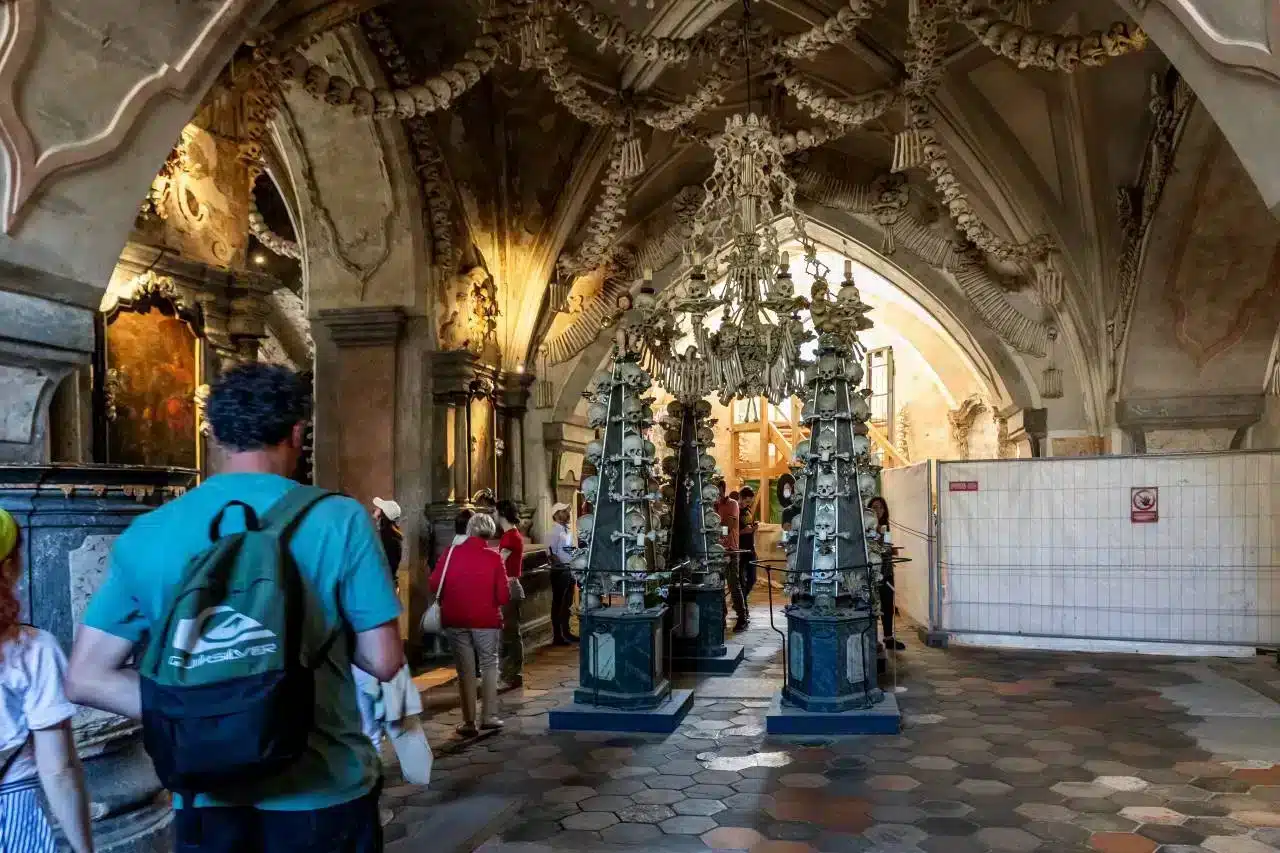
In the summer months, visitors can take advantage of the revitalized gardens surrounding the gallery, creating an ideal environment for relaxing walks. Also, on some special evenings, enchanting views and magical atmospheres can be enjoyed, making a visit to the GASK Gallery a memorable and enriching experience.
A short walk from the gallery, the Italian Court (Italská zahrada) offers a quiet corner in the heart of the city. Dating back to the 14th century, this complex was built to house Italian merchants arriving in Kutná Hora to trade silver. The medieval architecture of the place, with its elegant structures, creates a serene and quiet atmosphere, perfect for a break from the bustle of the old town. The Italian Court is a fascinating example of how the city has been able to integrate foreign influences, making it a place where history and culture blend harmoniously.
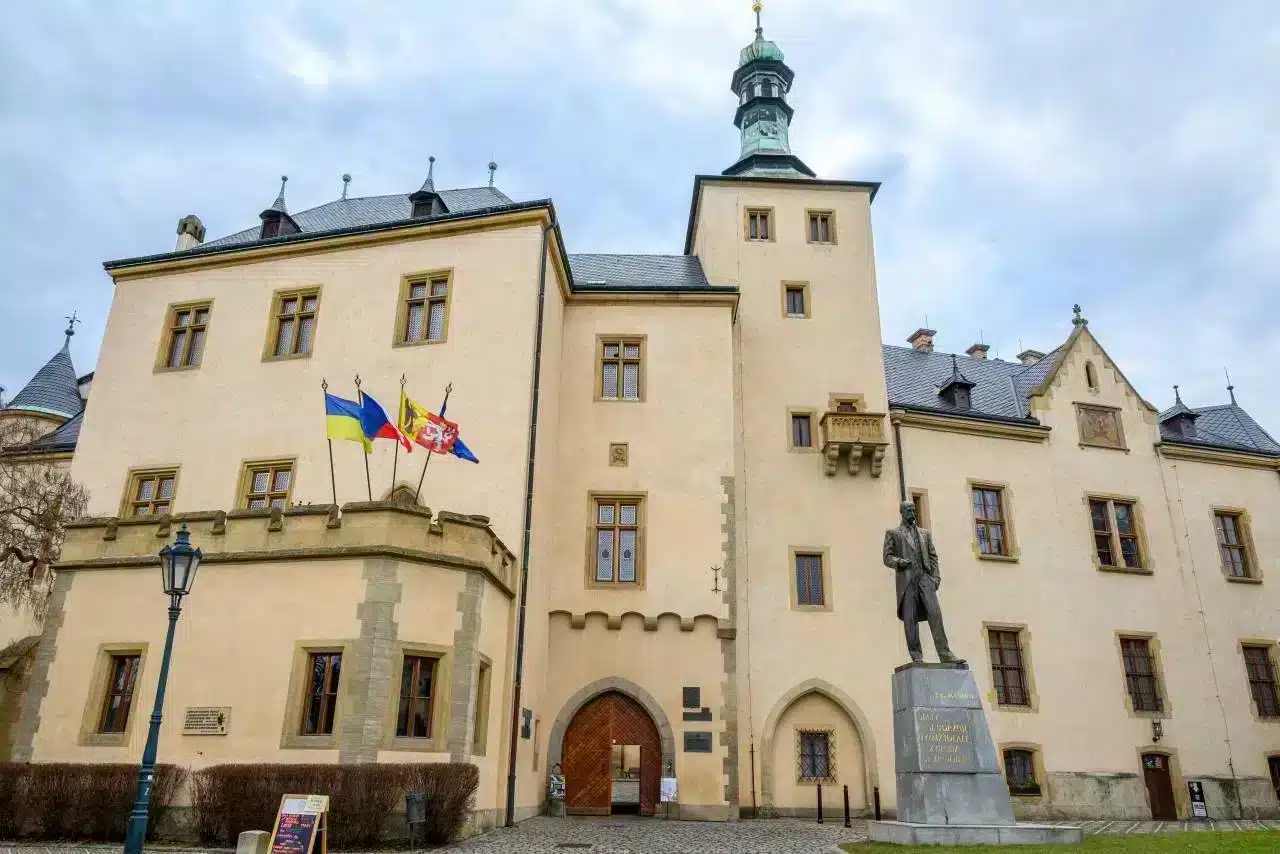
Together, these places tell of a Kutná Hora that goes beyond its mining fame, showing it as a city rich in art, tradition, and history.
Around Kutná Hora: Sedlec, between spirituality and mystery
An essential place to visit around Kutná Hora is the Sedlec district, home to the Church of the Assumption of the Virgin Mary and St. John the Baptist and the eerie Sedlec Ossuary.
The Church of the Assumption, a fine example of Baroque architecture, offers an interesting look at the religiosity of the region. With its frescoes and fine architectural details, it tells the spiritual story of Kutná Hora and its inhabitants. The church is famous for its connection to the charnel house located nearby, creating a deep connection between life and death in local tradition.
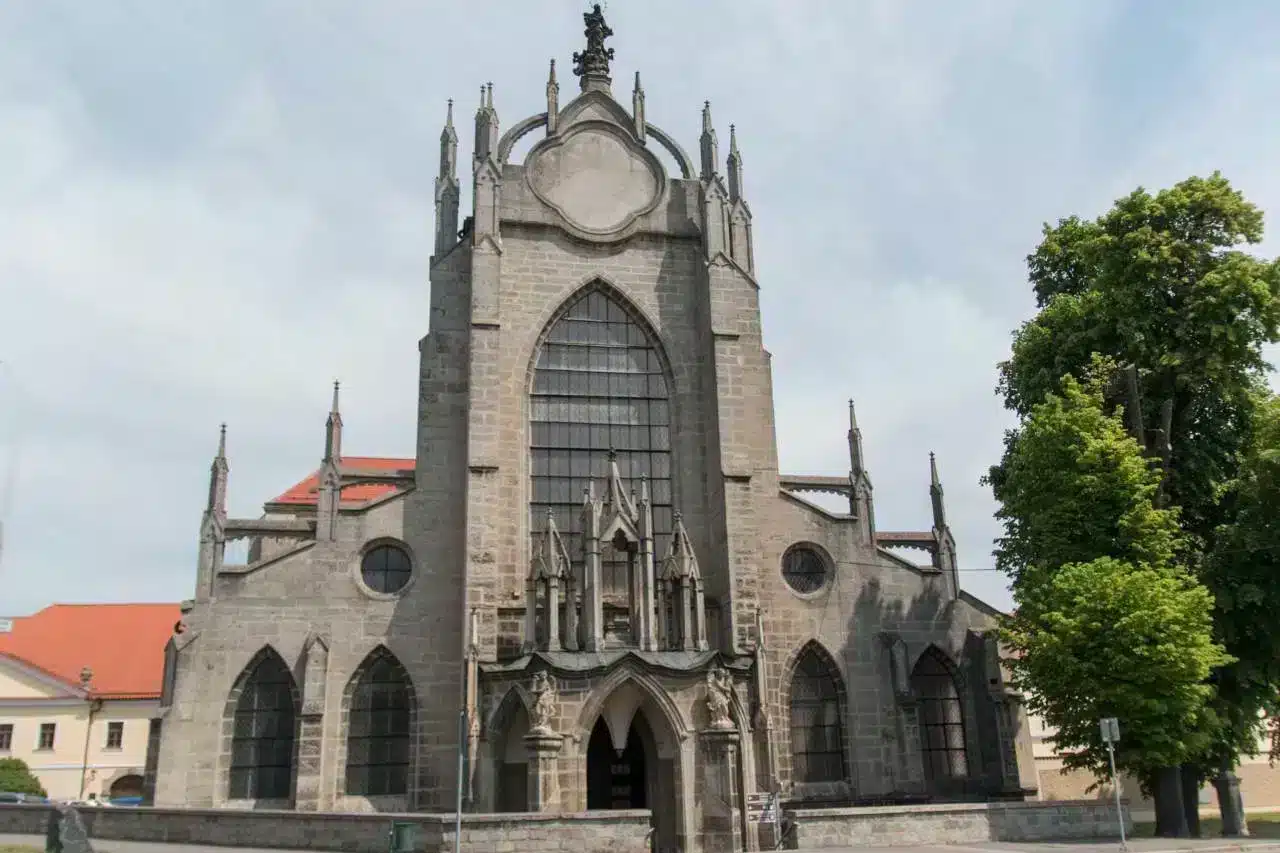
Below the Church of All Saints, the Sedlec Ossuary represents one of the most fascinating and macabre sites in the Czech Republic. This ossuary contains the remains of some 40,000 people, arranged in intricate sculptures and decorations made from human bones. Among the most famous works are the candelabra and decorations that reflect on the idea of death and eternity. The Sedlec Ossuary is a unique experience that attracts visitors from all over the world, making Sedlec a place of reflection on the fragility of human life and the spirituality that permeates this extraordinary corner of Kutná Hora.
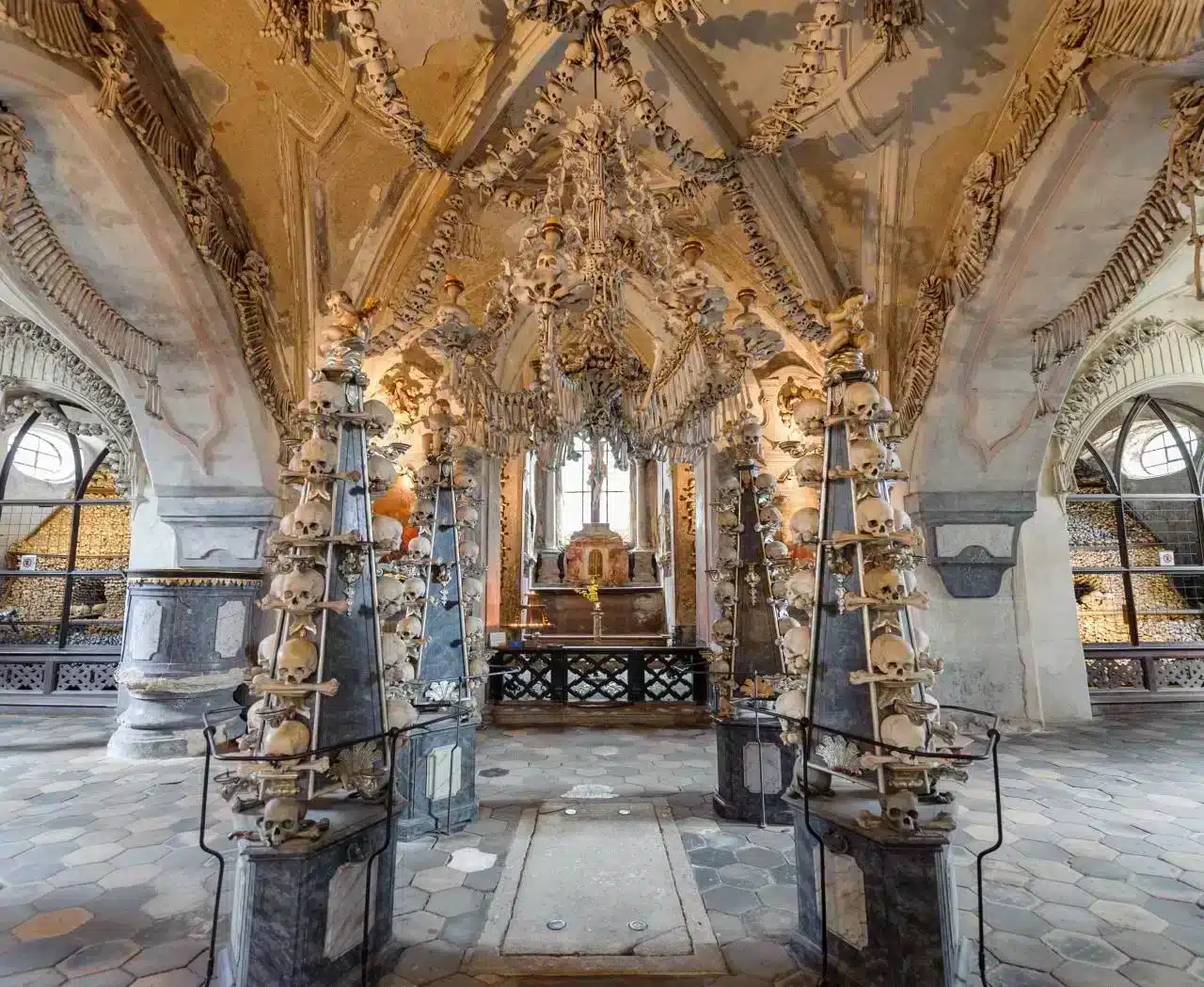
Kutná Hora is also Wine!
Kutná Hora is also famous for its wine traditions, and a visit to the city’s wine cellars is a must for wine lovers. The region is known for producing quality wines, especially whites. Historic wineries, which often date back centuries, offer tastings of local wines in atmospheric settings. Discovering the wine-making tradition of Kutná Hora is a perfect way to delve into the local culture, accompanied by an experienced guide who tells the story of these ancient practices.
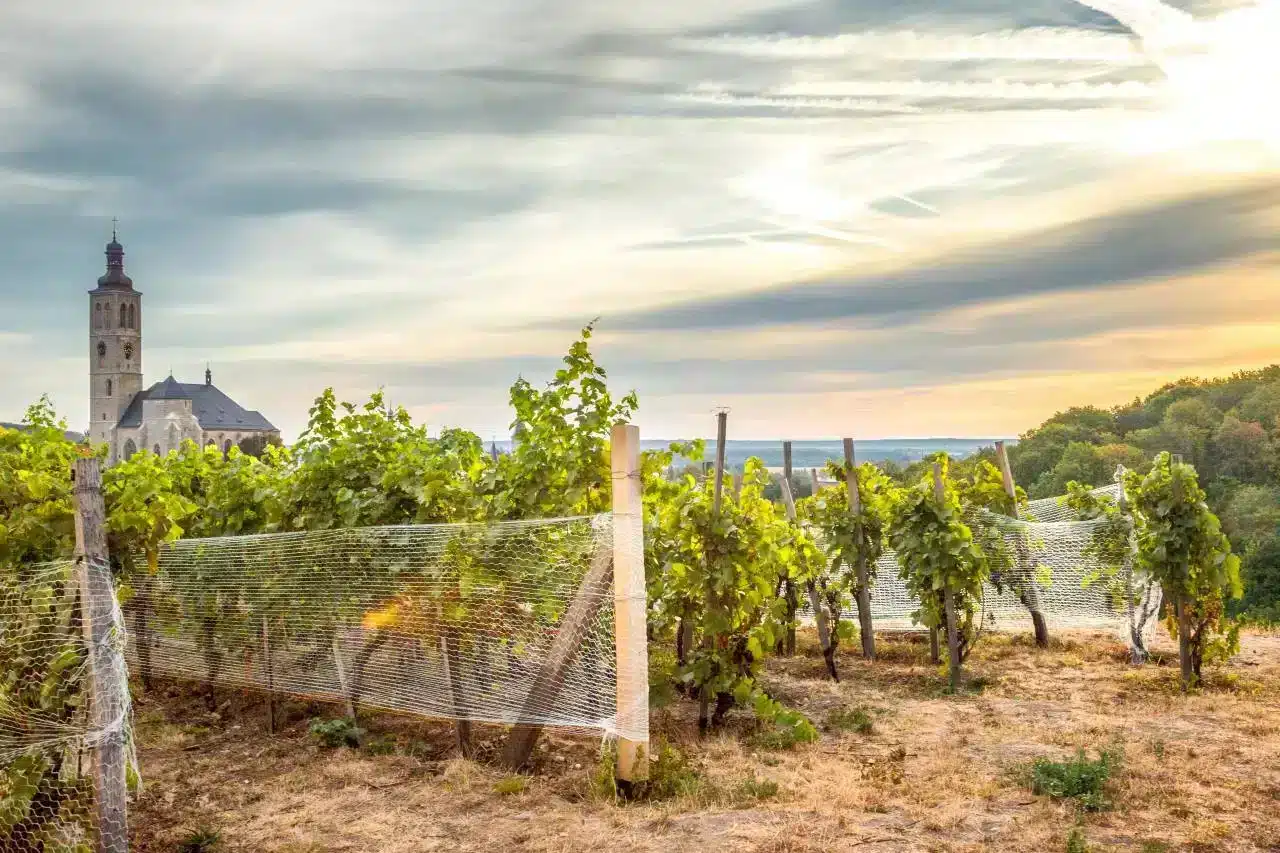
Between its Gothic churches, medieval monuments, and historical traditions, every corner of this city tells a story that goes back centuries. A visit to Kutná Hora not only offers the opportunity to discover one of the most beautiful cities in the Czech Republic, but also to immerse yourself in its fascinating history and extraordinary sights. If you are a fan of history, art, or simply looking for a unique destination, Kutná Hora is definitely a must-see!
Photo by Depositphotos



0 Comment